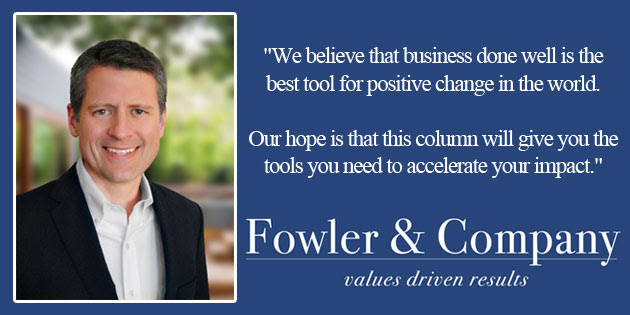Curt Fowler | Fowler & Company | Fowler, Holley, Rambo & Stalvey
We’ve been talking about tools and frameworks to set an inspiring and achievable strategy for your organization. Similar to how you can take multiple paths to a destination, you can use a variety of tools to develop your strategy. I recommend switching up the tools you use each year. Each tool or framework will help your leadership see a new and different perspective on your business which will result in fresh insights every year. And, it’s a lot more fun to try something new each year!
Today I want to walk you through how to use a TOWS analysis. A TOWS analysis is a great tool to review the current state of your organization and the environment you work in. TOWS also helps you develop strategies to excel. All wrapped in one package! TOWS stands for Threats, Opportunities, Weaknesses and Strengths. Threats and Opportunities are focused on the external environment, while Weaknesses and Strengths are focused on the internal state of your organization. Once your team brainstorms through each category, you can begin to create strategies to win in your marketplace with the assets you have.
As you work through this process, I recommend you give each team member time to think alone before discussing their ideas with the team. Give the team a few minutes to write down their thoughts on each section before starting the group conversation. Coach senior leadership to ask great questions and hold their comments until the end of each discussion. They will learn a ton from their team and avoid hijacking the conversation. Once the leader talks, many people will simply follow their lead.
Instruct your team to only provide verifiable statements. Avoid vague statements like “our customer’s love us.” How do you know? How do you know they love you more or less today than last year? You must move the conversation away from opinions, to verifiable facts.
Threats – First, focus your team on the threats your organization faces today or might face in the future. If you’ve done a PESTLE analysis previously, pull it out to help you brainstorm about threats in your external environment. Consider these questions. What financials threats do we face? What moves could our competitors make? How are customer relationships? Are customer preferences likely to change? How is technology changing our business?
Opportunities – Again, pull out your PESTLE analysis to start your thinking. Of all the changes going on in the external environment, what are some opportunities we could take advantage of? Look for opportunities to deepen the relationship with your customers. Opportunities to take advantage of a competitors’ weakness. Look for opportunities from changes in technology, politics, demographics, and customer preferences.
Weaknesses – The discussion on weaknesses can be tough. This section requires you to focus on the soft underbelly of your business. Focus on facts about the business. If you make it about a person, walls will quickly go up and kill the conversation. Try these questions to get the conversation started. Why have you lost customers in the past year? Why have you missed sales opportunities? What weaknesses does the market perceive you have? Does the market see you as the best in your industry? Why not? Are you financially sound and ready to thrive through economic swings?
Strengths – The strengths conversation is much more fun and your team will be ready to defend your organization’s honor after all the talk about threats and weaknesses. Consider these questions. What do your customer’s love about working with you? What do you have that your competitors want? What resources do you have that your competition does not? What factors allow you to make the sale over your competition?
Now that you have covered all four topics, have your team prioritize the ideas captured in each section. Focus the team on the top three ideas in each section. You can now begin to formulate strategies based on what you learned. Use the following framework to drive the discussion.
Strengths – Opportunities: How can you leverage your strengths to take advantage of opportunities in the marketplace?
Weaknesses – Opportunities: How can you minimize the impact of your weaknesses by taking advantage of opportunities?
Strengths – Threats: How can you use your strengths to minimize the impact of threats against your organization?
Weaknesses – Threats: What moves can you make as an organization to minimize your weaknesses and avoid threats?
Remember, if you will use a variety of tools each time you get together, you will learn more and gain a greater perspective each time.
Curt Fowler is President of Fowler & Company and Director at Fowler, Holley, Rambo & Stalvey . He is dedicated to helping leaders create and achieve a compelling vision for their organization. He is a syndicated business writer, keynote speaker and has an MBA in Strategy and Entrepreneurship from the Kellogg School. He is also a CPA and a pretty good guy as defined by his wife and four children.











